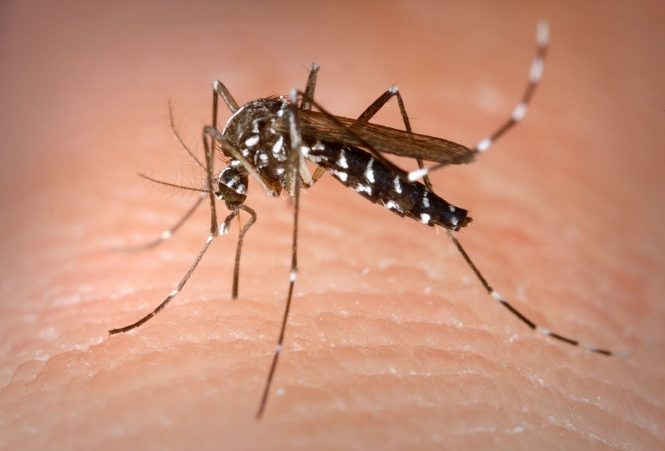
The tiger mosquito can be identified by its distinctive black-and-white stripes
The tiger mosquito has now been confirmed in 42 departments across the country, with an alert issued to warn of its danger as a carrier of disease, along with advice to prevent its spread.
The species has been described as particularly invasive, and a vector for serious diseases, including dengue fever and viral infections chikungunya, and zika.This has made the insect a priority for authorities to monitor, especially during its imminent usual "active period" of May 1 to November 30.
Currently most of the south and middle of the country is affected, as well as southern Ile-de-France, and Corsica. Just six departments were recorded as affected in 2010.
A
statement from health authority La Direction Générale de la Santé (DGS) confirmed that tiger mosquito numbers had indeed "doubled in the past two years" in France, and that had made it a "priority target for surveillance".
The mosquito is just a few millimeters wide, and therefore difficult to detect: a study from Ifop, on the Vigilance Moustiques website, said that 43% of inhabitants in the affected departments do not know what to look for.The clue is in the name; it can be identified as distinct to the common mosquito thanks to its black-and-white "tiger" striped body.
The insect has been identified as the source of a dengue fever epidemic currently affecting the French Indian Ocean island of La Réunion. Authorities fear that people travelling between the island and the mainland could "risk the virus being imported".
Yet, the DGS has reminded residents that there were 11 cases of native dengue fever recorded in the Herault (Occitanie) in 2014, seven cases in the Gard (Occitanie) in 2015, and 17 cases of chikungunya reported in the Var (Provence-Alpes-Côte d'Azur) in 2017.
Symptoms of dengue fever and chikungunya include severe joint pain, fever, headaches, weeping eyes, and a rash.
Anyone with these symptoms, whether abroad or in France, should consult a doctor immediately.
One way to reduce the presence of tiger mosquitoes is to drain away all stagnant water, including anything outside that could collect rainwater, and even vases of flowers filled with water inside.The advice is to replace water with sand, or to change vases several times a week, to prevent female mosquitoes from laying eggs in the water.Anyone who sees a tiger mosquito, especially in a department that has not yet been officially declared as affected, should send a photo to
Vigilance-moustiques.com, ou
Signalement-moustique.fr, to allow authorities to track its spread.
Once an area is confirmed as affected, authorities enact "vector control". This includes using insecticide in the areas concerned, and taking care that the insects do not become carriers of disease.
In certain communes, such as Blagnac, near Toulouse (Haute-Garonne, Occitanie), new predators have been introduced to try to limit insect numbers, including fish that eat mosquito eggs, and bats that can eat up to 2,000 mosquitoes in one night.Anyone travelling to La Réunion is advised to protect themselves from mosquito bites during the day and night by using anti-mosquito sprays, and clothes with long sleeves and trousers.
Symptoms can take up to two weeks to show up, so anyone who has recently travelled to La Réunion is also warned to be vigilant.
Reader Comments